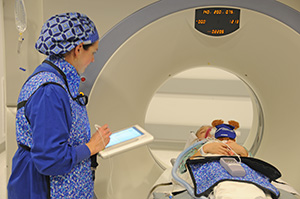
Mobility Defined
As the computer form factor shrank from the size of a room to a laptop, computing “mobility” finally became a reality as we could finally carry our devices with us. For over a decade, the laptop continued to shrink while increasing in performance and lowering in price. Mobility became synonymous with portability. However, with the advent of the smart phone, “mobility” now transcends a single product category and has morphed into an experience. Over a short 5 years, mobility has become synonymous with “easy”, “convenient”, “enabling”, “engaging”, “meaningful”, “connected”, and “accessible”.
Mobility is no longer a material thing, but rather it’s the picture of a 3-year-old playing their favorite game on their tablet while at their brother’s soccer game. It’s taking a spontaneous video of our kids playing in the pool and then sharing it with their cousins in Europe. Mobility is an experience that fits naturally into our daily lives while delivering powerful, improved possibilities – PeriOperative Medicine is no exception.
1. Mobile Means Real-Time Analytics
Mobile devices by default are connected to the internet, and thus, they can be connected to massive data centers. And by massive, I mean beyond our comprehension. Think of Twitter, Facebook, Instagram. Always there. Always active. Consider What’s App? with its 600 million photos and 100 million videos uploaded every day by 450 million active users across the globe. Just consider those numbers. They are massive…and growing.
Fortunately, the technology created to support and service these data needs is available to all market segments, not just billion dollar companies. For healthcare, these secure, hosted, enterprise environments are particularly transformative in 2 important ways:
a. Empower the Provider
As a practitioner, I now have the ability to view my own performance with meaningful perspective. For PeriOperative Medicine, I can see my own turn-around-times, on-time starts, ready times, recovery times, and my compliance with patient safety metrics. I can monitor my patient’s waiting experience and better manage their delays. With individualized, real-time, comparative analytics, I am empowered with meaning to improve my own practice – before administration even intervenes.
b. Smarter Administration
Such data analytics are not limited to the individual provider. The administration is uniquely positioned to compare individual providers, identify best practices, find areas to improve, measure the effect of interventions, and share quality of service with individual surgeons – all in real-time, with no extra human resources. Cloud-hosted, user-friendly, and web-based analytics are available without the need for complex, custom report generation or expensive IT infrastructure and support teams. Mobility has transformed our ability to gain insight and improve in real-time without breaking the bank.
2. Flexible Practice
Our first job is always patient care. As an anesthesiologist, my national society motto is “vigilance”. And it’s not documentation vigilance or computer vigilance. It’s vigilance on patient care – undistracted, focused, and responsive. As we move our patients from pre-op, to intra-op, to recovery and as we care for patients in basement radiology suites or sedations on the floor, we necessarily need a technology that naturally fits our every day mobile practice; a technology that lets us face our patients, free from keyboards with no mouse required; a technology that empowers us to make smarter decisions – wherever we are.
Desktops bolted to anesthesia machines, workstations-on-wheels, and multiple login and logoffs are not mobile. Today’s connected tablets and stylus control allow for a type of continuous patient vigilance never before possible.

3. Improved Patient Experience
These users of Twitter, Facebook, Instagram are our patients, and they are now connected to their data by default. They want continuous access to their feeds and posts. They want to “like” and share their opinions and feedback. They want updates.
When these same users come for surgery, our current healthcare team now becomes the exception. We sit them in a room full of strangers to watch cable TV while we take their loved one to the edge. We put them in a black box and cut their connection to the data that really matters. Perhaps there’s a tracking board with a random number that changes color, or perhaps there’s a nurse positioned to help triage updates and questions every 30 minutes. In any case, the patient is now tethered to the waiting room blocked from real-time information.
With mobility, we can connect, engage, and empower our patients with information that matters to them – real-time updates, individualized education, and facility specific information. We can collect information that matters to us – healthcare questionnaires and outcomes. With mobility, we can forge a meaningful and persistent connection with our patients, elevating the role they play in their own healthcare.
Conclusion
Mobility is not a laptop or a Workstation-On-Wheels. It’s not a tablet, per se. Rather it’s the combination of portable form factors with cloud computing data centers. It’s a revolutionary experience whose influence on healthcare is still in its infancy. Mobility carries the potential to dramatically improve the experience, improve the outcome, and lower the cost.

